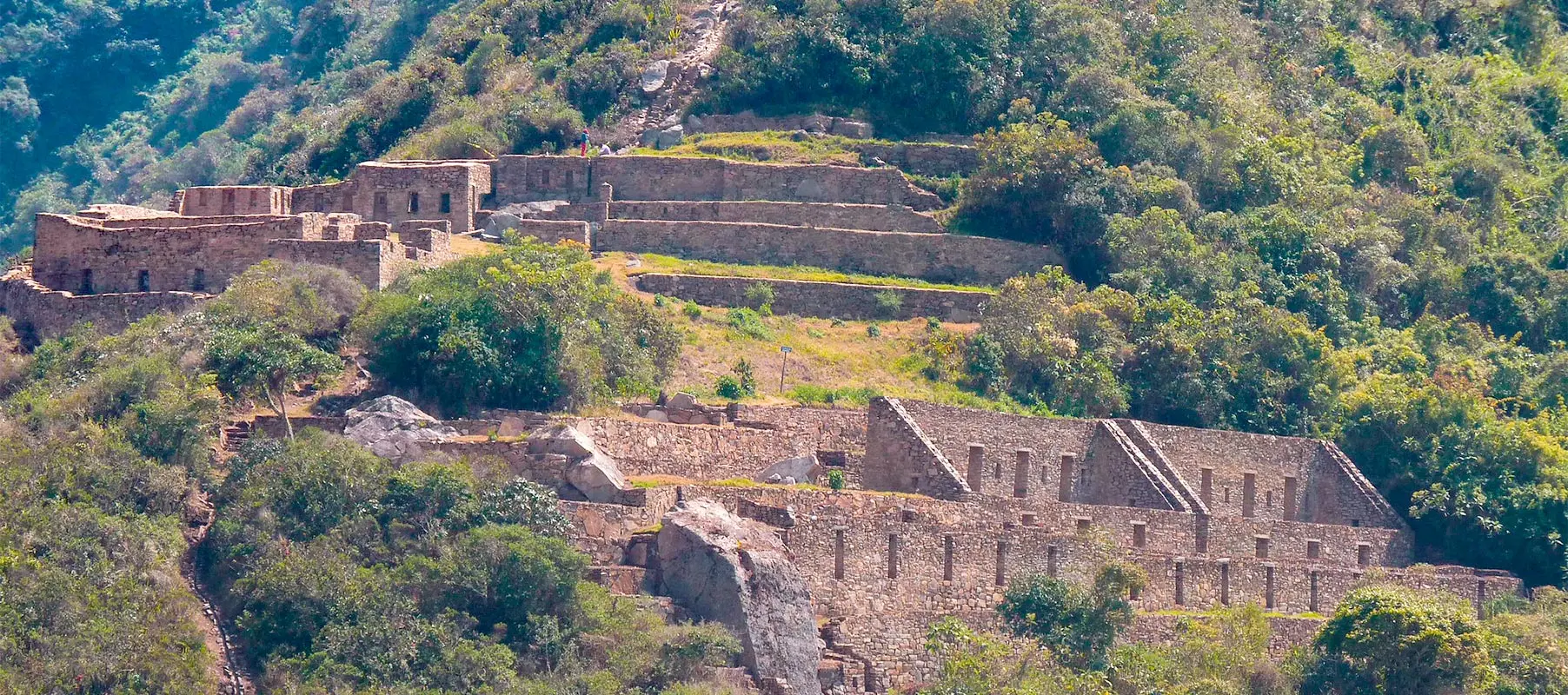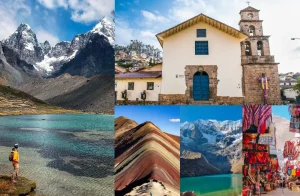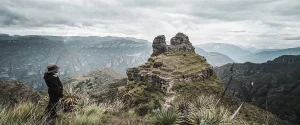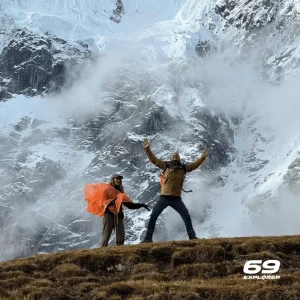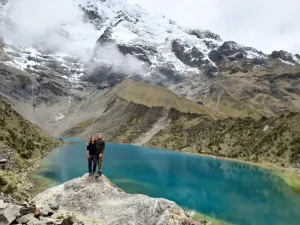It lays in the mountains high above the Apurímac River. The ruins of Choquequirao are some of the most unique and fascinating Incan ruins anywhere in Peru. The site’s incredible architecture, clinging to the mountainside and featuring extensive terracing resembles Machu Picchu. But is also superior as the site is about 3 times larger. This clandestine ruin will surprise you with its beauty and magnificence.
Amazingly, one of the unique features of Choquequirao is that it borders two distinct environments, the Andes and the Amazon, making it one of the most interesting ruins in all of Peru. The construction of Choquequirao was during the 1500s. Archaeologists also have theories that the city served as one of the final refuges for the Incas after the conquest by the Spaniards.
How to get to Choquequirao
From Cusco the only way to reach the start of the Choquequirao Trek is by bus or private vehicle, from there trekking is how you will get to the ruins of Choquequirao. It is recommended that you hire a guide and a few pack mules to carry extra supplies. It takes approximately 2 days of full hiking to get to the archeological site and 4 days total to complete the trip. The campsites, like the route itself, are well-maintained and equipped with facilities not found on most other Andean trails. The campsites all have running water, showers, toilet block and even small shops selling snacks and drinks.
Best Time to Go to Choquequirao Ruins
The best time to do the Choquequirao trek is between May and September. This is the dry season in the Andes, when the weather is the most predictable. During the rainy season between October and April often the trail is closed because of unsafe trail conditions.
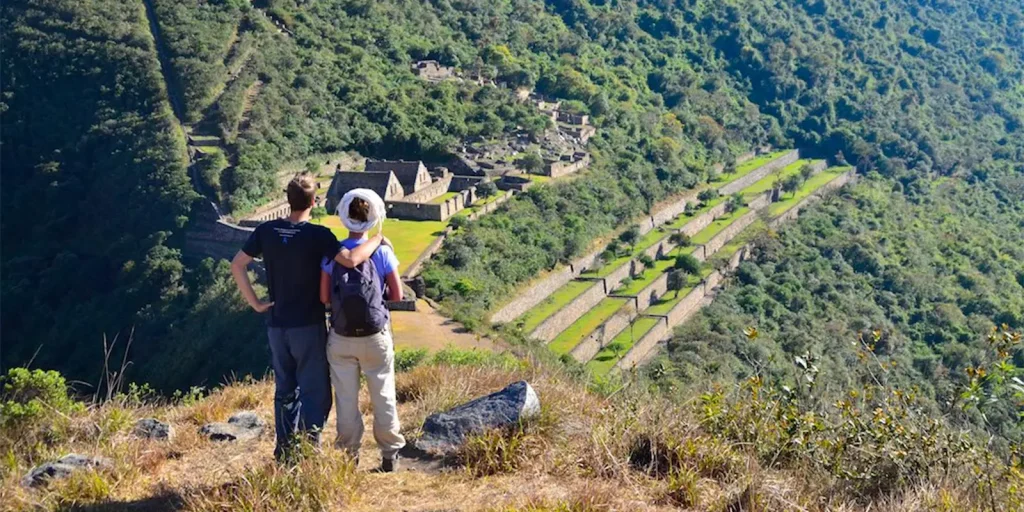
Independent Trekking vs Guided Package Trekking
Independent, of course you can complete the Choquequirao trek alone. Many people do this trek alone every year and enjoy the experience immensely, the trek is well maintained and clearly marked and for experienced trekkers will not be a problem. But you must be aware that if you chose to do the trek alone you will need to carry all that you will need for the 4 days by yourself, making the trek difficult especially at over 10000 ft above sea level.
However, it is strongly recommended that if you do the trek independently you should book reliable transportation to the trailhead and back again. Also with a guide, you’ll benefit from their knowledge of history with explanations to why the ruins were built in such a way and how the Incas used to live.
Guided tour package to Choquequirao Hike; if you purchase a guided tour package, not only will you benefit from freshly cooked meals, the experience of a local Peruvian guide and the support of your fellow traveler you will also you receive all the following
Private transportation to and from the trailhead, English speaking guide, cook and cooking equipment, all meals on trek, snacks, eating and bathroom tents, 4 person tents for 2 people, mule-handlers & mules saddled horse (1 horse for every 6 persons), First-aid kit & Emergency Oxygen bottle, boiled water when necessary.
Altitude Sickness
Altitude sickness can always be an issue at high altitudes. For the Choquequirao trek, it is highly likely that you will experience some form of altitude sickness, as elevations reach as high as 10,100 ft. For this reason, it is important to acclimatize properly, take your time on the trail, and take measures to combat symptoms.
Recommended to fight sickness include acclimatizing in the Andes for 48-72 hours, eating a light diet, staying hydrated, avoiding smoking and alcohol, easing into the hike and taking breaks whenever necessary. You should also contact your healthcare provider before leaving home for recommendations for anti-altitude sickness medication. Another local remedies are chewing coca leaves, drinking coca tea or consuming coca candies – all traditional treatments for fighting altitude sickness among the people of the Andes.
What you will see at Choquequirao Ruins
Choquequirao is situated at an elevation of 3,000 m above sea level on a southwest-facing side of a glaciated peak above the Apurimac River. The main structures, such as temples, elite residences, fountain and bath systems all are close to the surrounding two plazas. There are groups of common buildings clustered away from the plazas. Excavations and surface items suggest they were probably used for workshops and food preparation. Most buildings are well-preserved and well-restored. Today the restoration continues.
Sectors
The archaeological complex of Choquequiaro is divided into 12 sectors. While the contents of each sector are different, terraces used for various purposes are common throughout. It seems that most of the buildings here were either for ceremonial purposes, residences of the priests, or used to store food.
Ceremonial center
The ceremonial center of Choquequirao shares many features similar to those of other Inca ceremonial centers and pilgrimage sites. The ceremonial center consists of a main platform and a lower plaza. Stone lined channels carried ceremonial water, or chicha to shrines and baths throughout the site.
Subsectors
The area around Choquequiaro contains several subsectors that have been associated with the Inca culture that thrived in Choquequirao, suggesting that the subsectors are most likely part of the site.
Materials
All materials utilized for the construction of the site and surrounding sectors were stones that were mined from the local quarries.
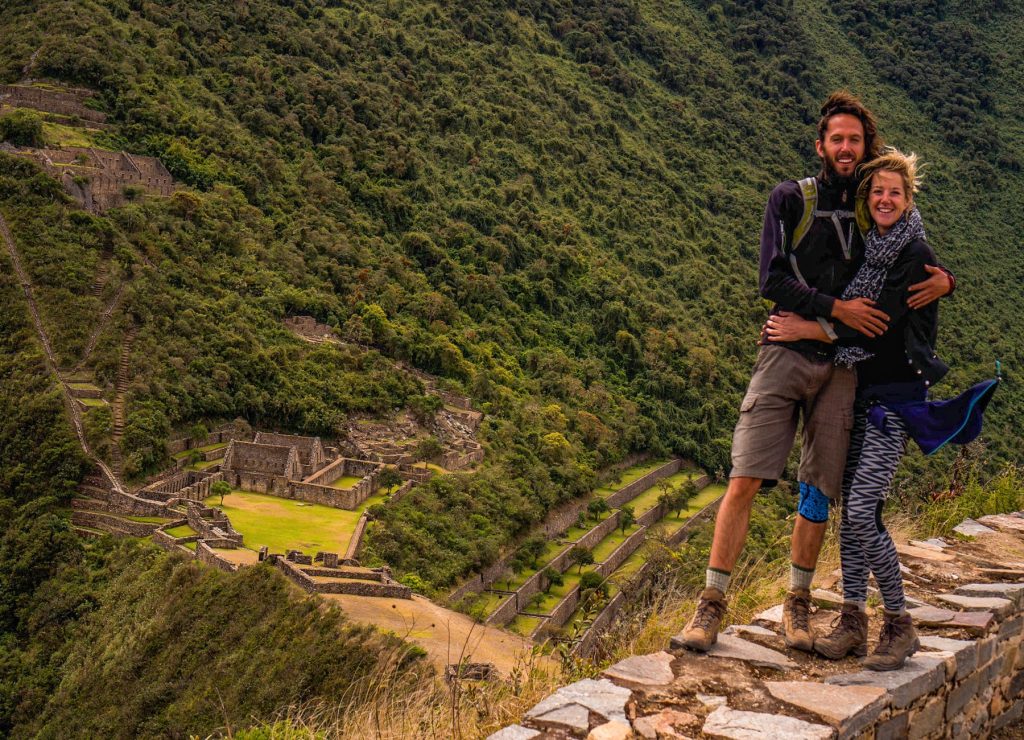
A Typical 4-day Choquequirao Hike, meals included, difficulty and distances walked
Day 1: Cusco – Capuliyoc – Playa Rosalinas – Santa Rosa
Start the journey early and travel to the starting point of your trek, ending the day at the first campsite at Santa Rosa.
- Meals included: Lunch – Afternoon Tea Time – Dinner
- Accommodation: Camping
- Distance: 16.5kms/ 10 miles
- Difficulty: Difficult
Day 2: Santa Rosa – Maranpata – Choquequirao
Walk to the village of Maranpata, through micro climates, arrive at the site of Choquequirao, guided tour before heading to Maranpata for the second campsite.
- Meals included: Breakfast – Lunch – Afternoon Tea Time – Dinner
- Accommodation: Camping facilites
- Distance: 16km/10miles
- Difficulty: Difficult
Day 3: Marampata –Chiquisca
Descend to the magnificent Apurimac River, marvel at its strength and power, your guide will explain its importance to the Inca. Trek to the campsite at Chiquisca.
- Meals included: Breakfast – Lunch – Afternoon Tea Time – Dinner
- Accommodation: Camping facilites
- Mínimum Altitude: 1,550m/5,117ft
- Maximum Altitude: 1,990m/6,270ft
- Distance: 12kms/7.5 miles
- Difficulty: Difficult
Day 4: Chiquisca – Saywite – Cusco
A challenging trek to Capuliyoc Pass. Spectacular views of the surrounding mountains and canyon. Drive to Cachora for lunch. Drive to Saywite for a guided tour. Later return to Cusco.
- Meals: Breakfast – Lunch
- Minimum Altitude: 1,990m/6,270ft
- Maximum Altitude: 2,850m/9,407ft
- Distance: 8km/4.4 miles
- Difficulty: Difficult
Travel Tips
- The ruins of Choquequirao are most appealing for those that crave adventure and love pristine natural landscapes and love a challenge.
- Don’t forget to bring good waterproof gear as the weather can be quite unpredictable.
- Do some hiking before arriving in Peru to ensure that you are fit for the trip.
- Make sure your hiking boots are broken in before attempting your Choquequirao hike.
- The altitude of the ruins is also at 2600 meters, so the trek is only recommended for those that consider themselves relatively in shape.
Packing List for Choquequirai Trek
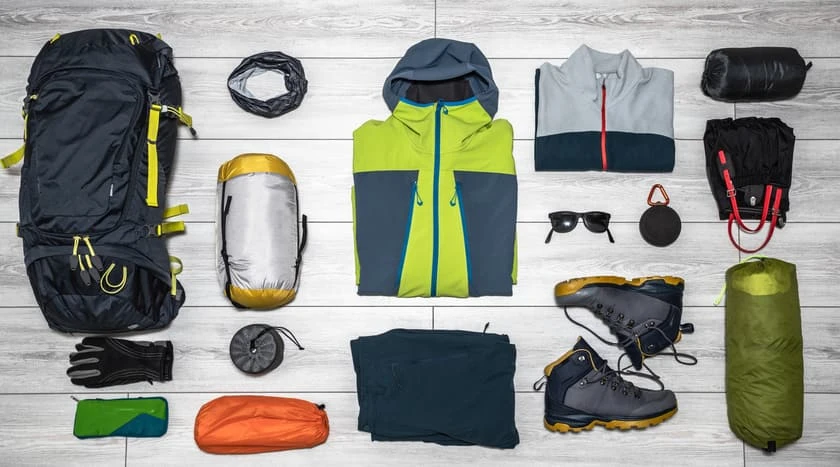
Back Pack to take with you on the trek
- Water Bottle, reusable to be filled at each meal
- Sun Hat
- Sunscreen
- Headlamp, essential
- Wool Hat
- Raincoat and Pant
- Fleece
- Snacks, like chocolate bars, cereal bars, dry fruits for the trek
- Gloves
- Camera
- Hand Sanitizer and Moisturizer
- Toilet Paper and small plastic bags for waste
Duffel Bag to be carried daily by the porters
Note not accessible until the camp at night
- 2 T-shirts minimum
- 2 Hiking Pants minimum
- 4 Sets undergarments
- 3 Set hiking socks
- Bathing Suit
- Thermal Underwear
- Fleece, Down Jacket
- Comfortable shoes for camp
- Quick Dry towel
- Small Bottle of Soap
- Battery Charger, note there is no electricity on the trail.
- Large plastic bags
Toiletries
- Face Cleanser and Moisturizer
- Hand Sanitizer
- Wet Wipes
- Toothbrush and Paste
- Medications
- Small First Aid Kit
Take the time to explore the possibility of trekking to Choquequirao, subsequently a bigger ruin than Machu Picchu, the trek is quieter with opportunity to walk at your own pace. Don’t miss out on this challenging but beautiful hike through the breath-taking Peruvian Andes. Book today to avoid disappointment.

